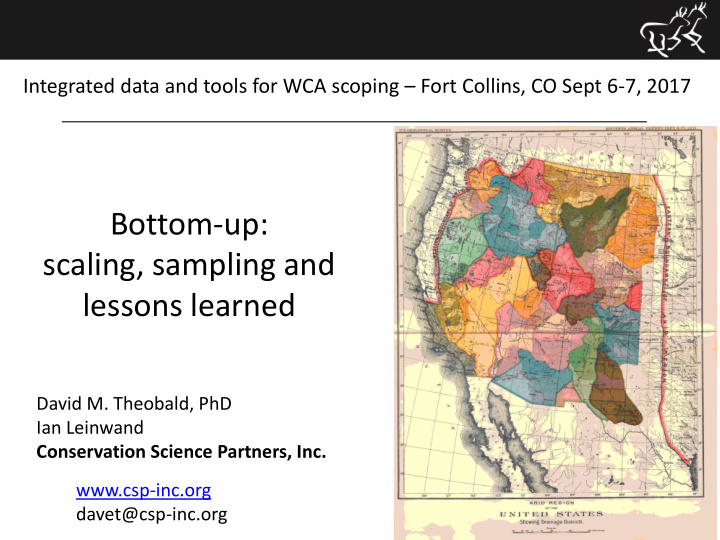



Integrated data and tools for WCA scoping – Fort Collins, CO Sept 6-7, 2017 Bottom-up: scaling, sampling and lessons learned David M. Theobald, PhD Ian Leinwand Conservation Science Partners, Inc. www.csp-inc.org davet@csp-inc.org
Place assessment on foundation of ecological processes Process mechanism measurement Hydrological� Mechanism� of� ecological� Variable � process � influence� (Allan� 2004) � Upland � Sedimentation� due� to� human� Slope-weighted� human� modification� modification � � Nutrient� enrichment � Nitrogen� and� phosphorus� � Contaminant� Pollution � Biological� impairment� � Oil� &� gas� exposure � Vulnerability� to� potential� breaches� by� wells� and� holding� ponds� Lateral � Riparian� clearing/canopy� Human� modification� opening � Longitudinal � Hydrologic� alteration � Flow� Modification� Index� � � Accumulated� road-stream� crossings� density� � � Timing� of� snowmelt� discharge*� � Thermal� alteration � Stream� temperature� warming*�
Organize by space-time framework Temporal duration vs. frequency Spatial extent vs. grain (resolution)
Organize by space-time framework Temporal duration vs. frequency Spatial extent vs. grain (resolution)
Scale up using hierarchical analytical units
Recognize abiotic context Ecologically-relevant Geophysical (ERGo) Landforms a b c d e g h f
Test and validate using rigorous sample design
All lands
Analytical framework to engage partners Analytical framework to identify Conservation Opportunity Areas Resilient Resources areas Vulnerable areas Change agents Collaboration Focal sites Actionable Actions
Recommend
More recommend